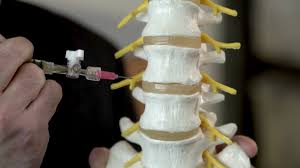
Breaking News
 Tennessee Sues Roblox, Says Game is a 'Gateway for Predators' Targeting Children
Tennessee Sues Roblox, Says Game is a 'Gateway for Predators' Targeting Children
 Kushner and Witkoff Reportedly Draft $112B Plan to Turn Gaza Into 'Smart City'...
Kushner and Witkoff Reportedly Draft $112B Plan to Turn Gaza Into 'Smart City'...
 Christmas in Venezuela: What It Was Like After Socialism Destroyed the Country
Christmas in Venezuela: What It Was Like After Socialism Destroyed the Country
 Can AI Build Your Home? | From #460 Ryan Fink & Ty Frackiewicz | The Way I Heard It
Can AI Build Your Home? | From #460 Ryan Fink & Ty Frackiewicz | The Way I Heard It
Top Tech News
 Perfect Aircrete, Kitchen Ingredients.
Perfect Aircrete, Kitchen Ingredients.
 Futuristic pixel-raising display lets you feel what's onscreen
Futuristic pixel-raising display lets you feel what's onscreen
 Cutting-Edge Facility Generates Pure Water and Hydrogen Fuel from Seawater for Mere Pennies
Cutting-Edge Facility Generates Pure Water and Hydrogen Fuel from Seawater for Mere Pennies
 This tiny dev board is packed with features for ambitious makers
This tiny dev board is packed with features for ambitious makers
 Scientists Discover Gel to Regrow Tooth Enamel
Scientists Discover Gel to Regrow Tooth Enamel
 Vitamin C and Dandelion Root Killing Cancer Cells -- as Former CDC Director Calls for COVID-19...
Vitamin C and Dandelion Root Killing Cancer Cells -- as Former CDC Director Calls for COVID-19...
 Galactic Brain: US firm plans space-based data centers, power grid to challenge China
Galactic Brain: US firm plans space-based data centers, power grid to challenge China
 A microbial cleanup for glyphosate just earned a patent. Here's why that matters
A microbial cleanup for glyphosate just earned a patent. Here's why that matters
 Japan Breaks Internet Speed Record with 5 Million Times Faster Data Transfer
Japan Breaks Internet Speed Record with 5 Million Times Faster Data Transfer
New technique both refills and patches herniated discs

Between each of our vertebra is a shock-absorbing spinal disc, which consists of a rubbery exterior known as the annulus and a jellylike "filling" called the nucleus. Herniated discs occur when a tear in the annulus allows some of the nucleus to leak out and bulge into adjacent nerves, irritating them.
Surgical treatments typically involve either removing the protruding nucleus and then sewing up the tear in the annulus – leaving the disc "deflated" – or refilling the disc with a replacement material, which may eventually also leak out through the unpatched hole.
Led by Cornell University's Prof. Lawrence Bonassar, scientists from the US and Italy have developed a procedure that combines the refilling with the patching. It's performed after a discectomy, which is the standard process for removing the leaked nucleus material.

 Advanced Propulsion Resources Part 1 of 2
Advanced Propulsion Resources Part 1 of 2

